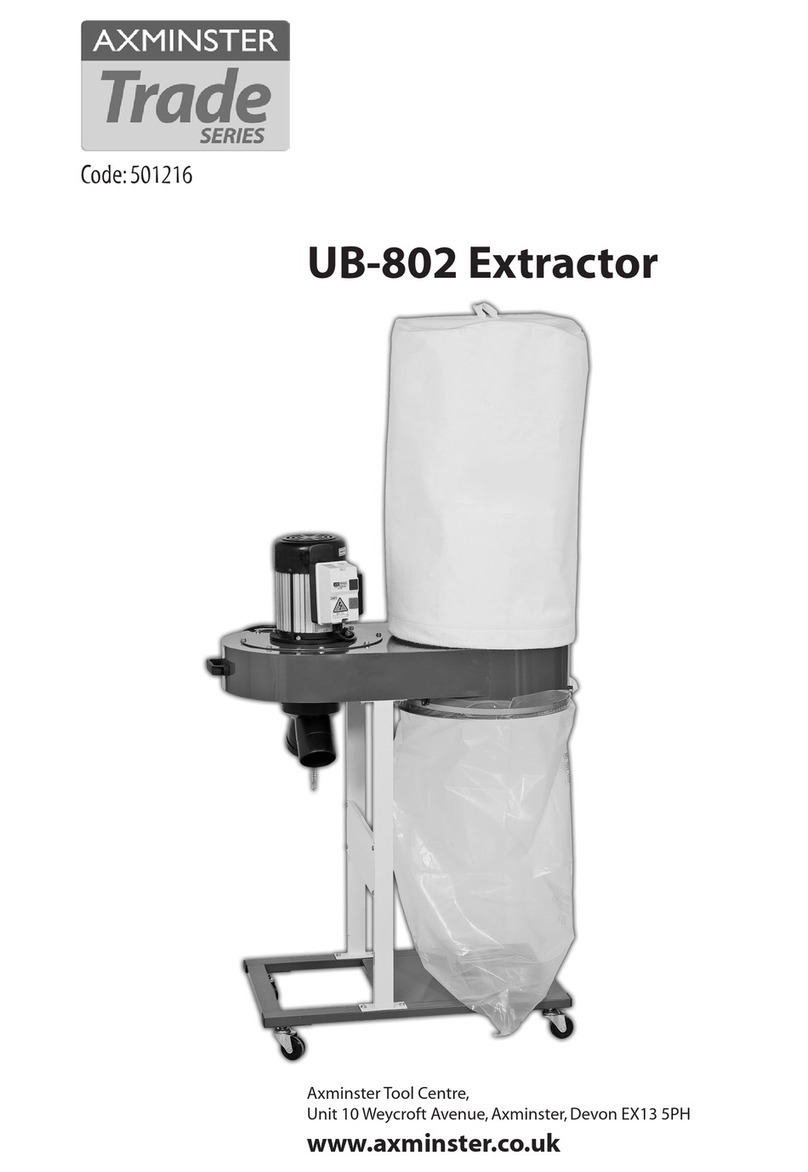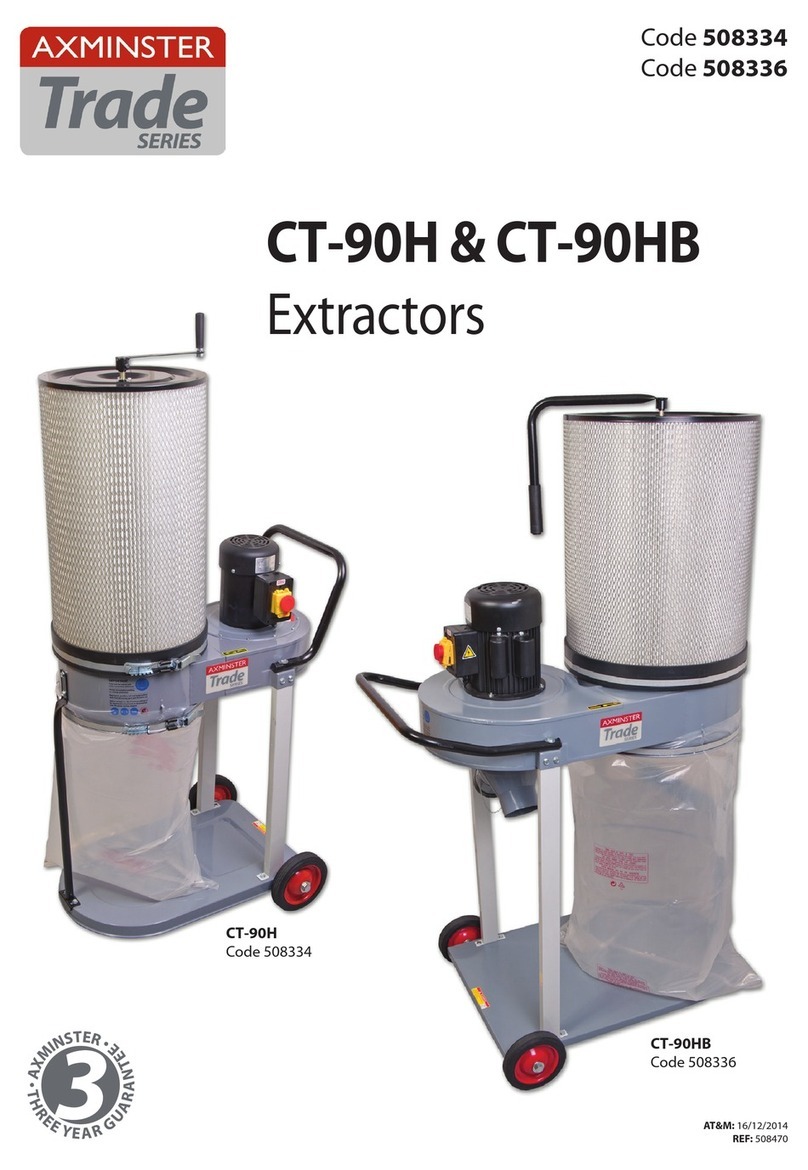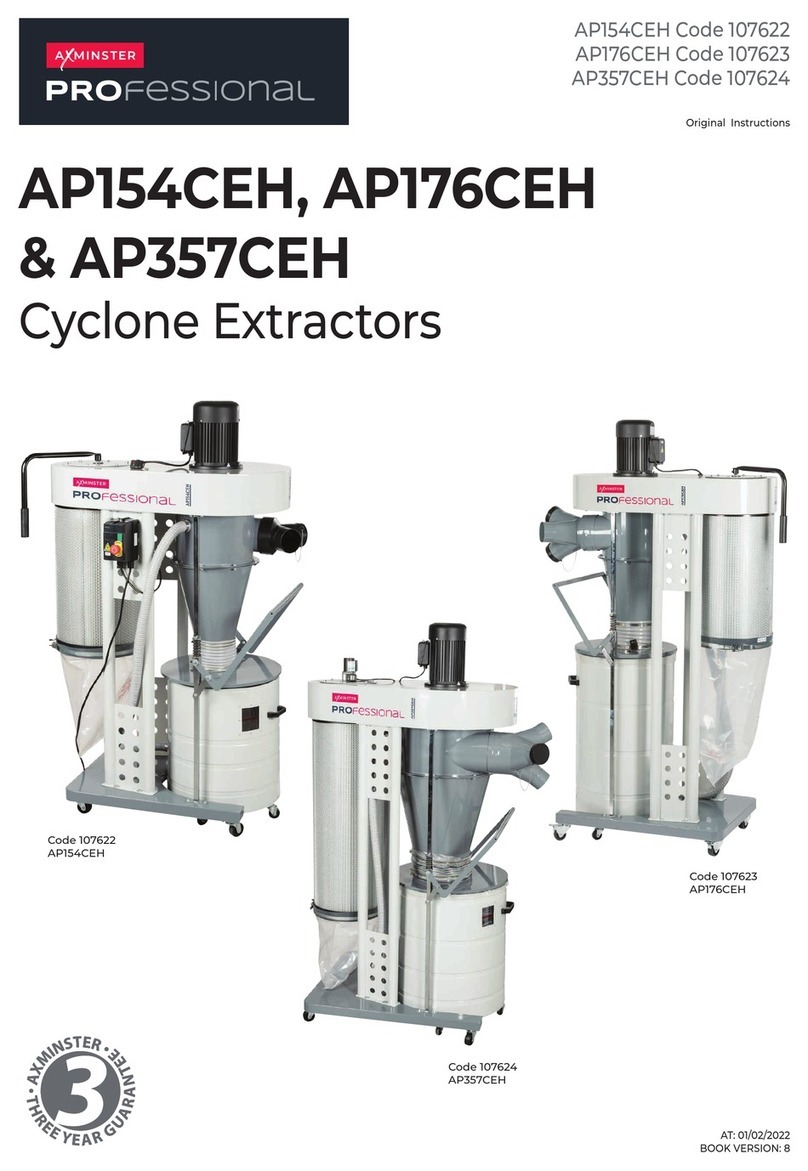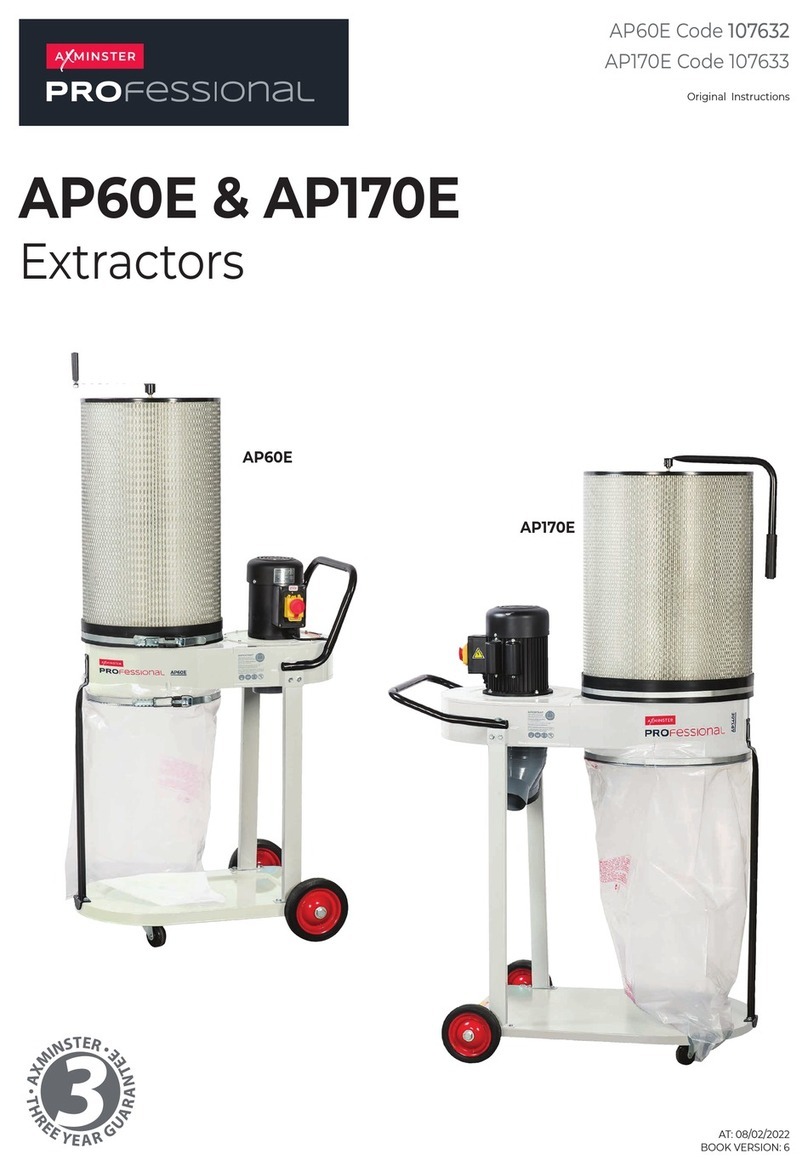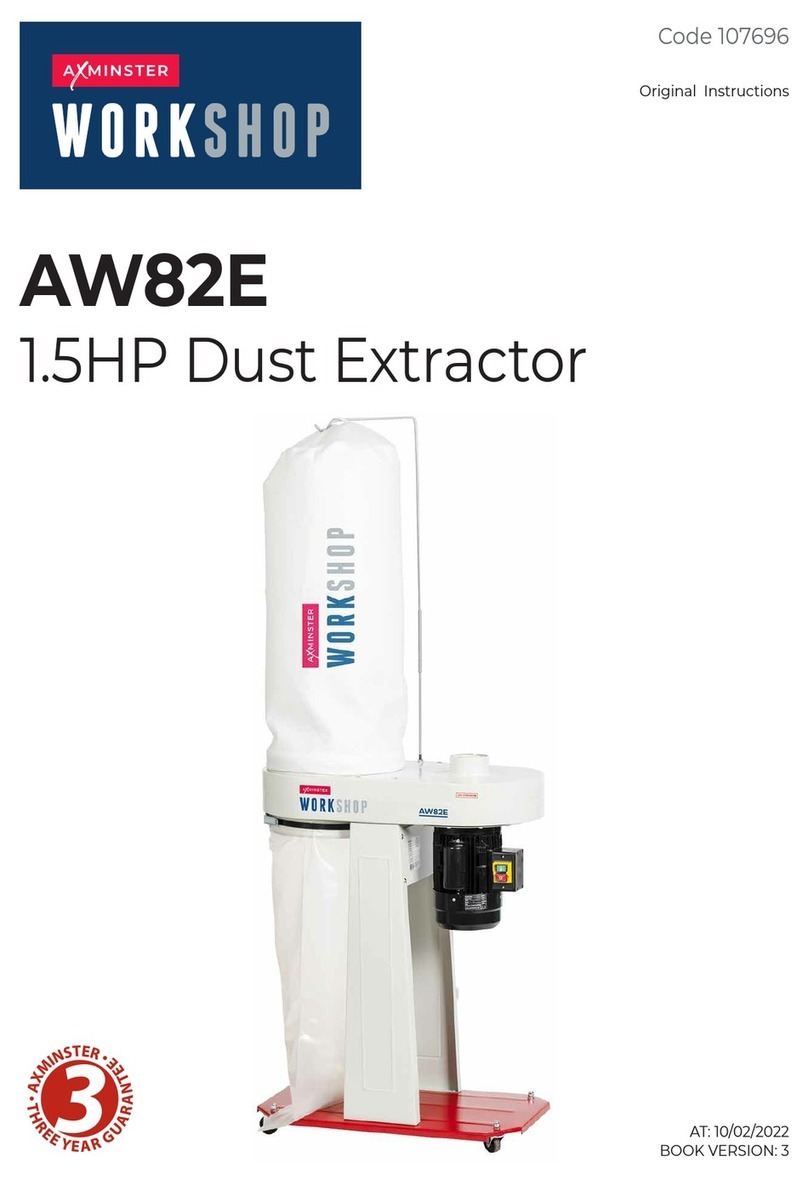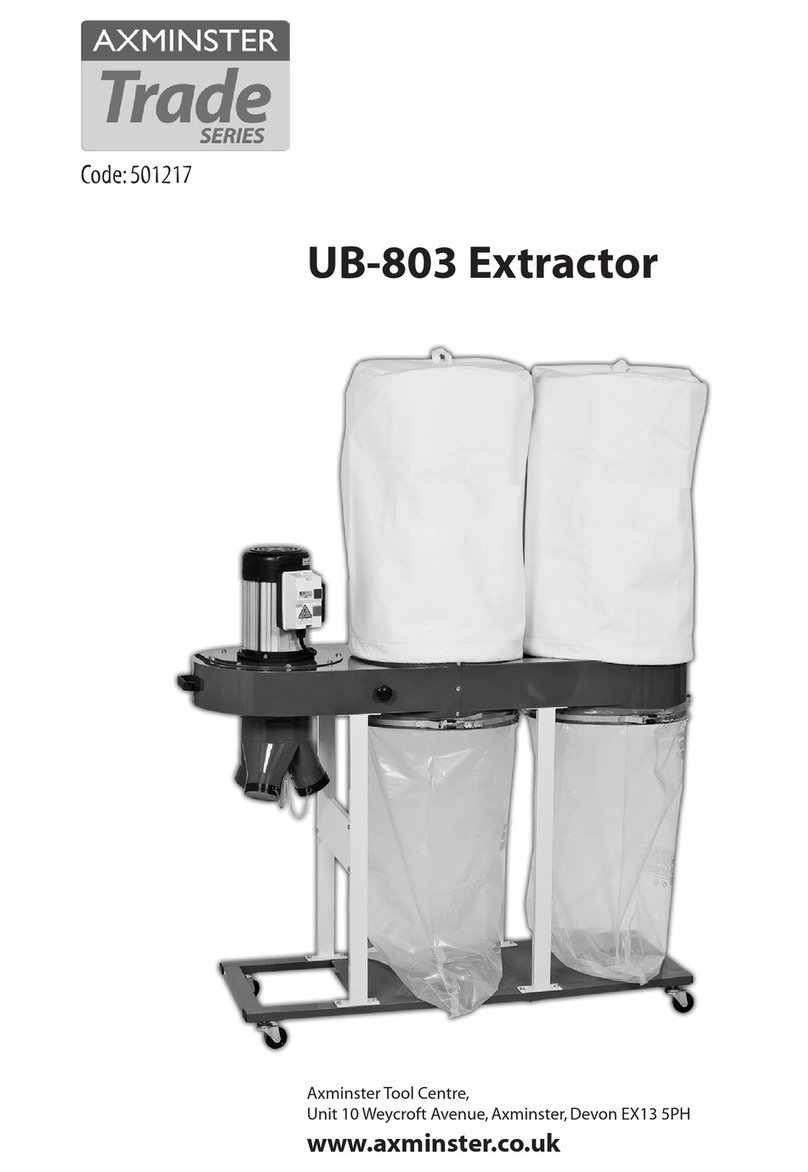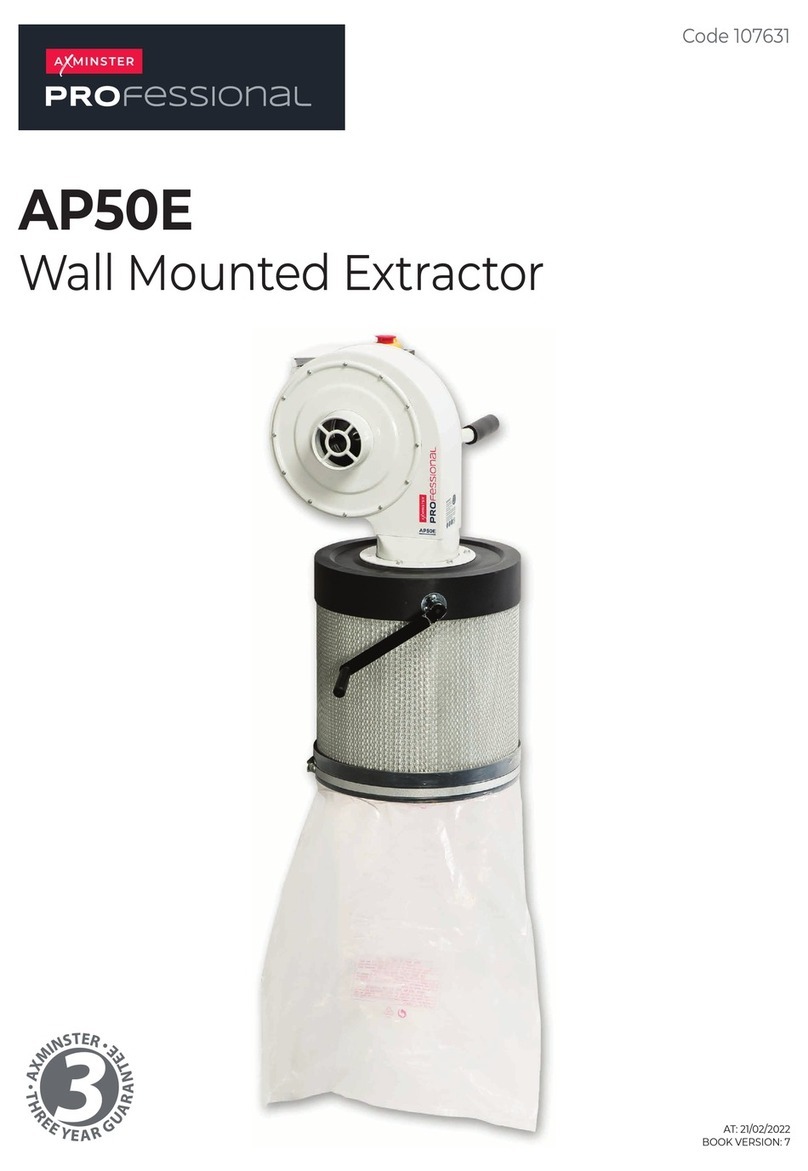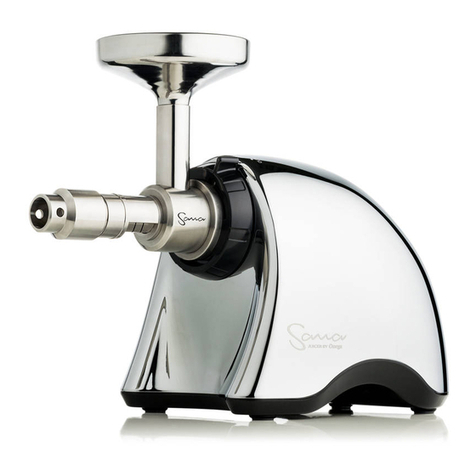
4
INTENDED USE
This dust collector is only intended for collecting wood dust and
chips from woodworking machines. Do not use this dust collector
to collect metal, dirt, pebbles, drywall, asbestos, lead paint, silica,
liquids, aerosols, or any flammable, combustible, or hazardous
materials.
HAZARDOUS DUST
Dust created while using machinery may cause cancer, birth
defects, or long-term respiratory damage. Be aware of dust
hazards associated with each work piece material, and always
wear a NIOSH-approved respirator to reduce your risk.
DUST ALLERGIES
Dust from certain woods may cause an allergic reaction in people
and animals.
Make sure you know what type of wood dust you will be exposed
to in case there is a possibility of an allergic reaction.
WEAR RESPIRATOR
Fine dust that is too small to be caught in the filter will be blown
into the ambient air during operation. Always wear a NIOSH-
approved respirator during operation and for a short time after to
reduce your risk of permanent respiratory damage.
EMPTYING DUST
When emptying dust from the collection container, wear a
respirator and safety glasses. Empty dust away from ignition
sources and into an approved container.
DISCONNECTING POWER
SUPPLY
Turn the switch off, disconnect the dust collector from the power
supply, and allow the impeller to come to a complete stop before
leaving the machine unattended or doing any service, cleaning,
maintenance, or adjustments.
SUSPENDED DUST
PARTICLES AND IGNITION
SOURCES
Do not operate the dust collector in areas were explosion risks are
high. Areas of high risk include, but are not limited to, areas near
pilot lights, open flames, or other ignition sources.
FIRE SUPPRESSION Only operate the dust collector in locations that contain a fire
suppression system or have a fire extinguisher nearby.
IMPELLER HAZARDS
Do not place your hands or tools near the open inlet during
operation for any reason. The powerful suction could easily cause
accidental contact with the impeller, which will cause serious
personal injury or damage to the machine. Always keep small
animals and children away from open dust collection inlets.
AVOIDING SPARKS
Do not allow steel or rocks to strike the impeller—this may produce
sparks. Sparks can smolder in wood dust for a long time before a
fire is detected. If you accidentally cut into wood containing tramp
metal (nails, staples, spikes, etc.), immediately turn off the dust
collector, disconnect it from power, and wait for the impeller to
stop—then empty the collection container into an approved airtight
metal container.
OPERATING LOCATION
To reduce respiratory exposure to fine dust, locate permanently
installed dust collectors away from the working area, or in another
room that is equipped with a smoke detector. Do not operate the
dust collector in rainy or wet locations—exposure to water may
create a shock hazard or decrease the life of the machine.

